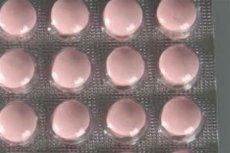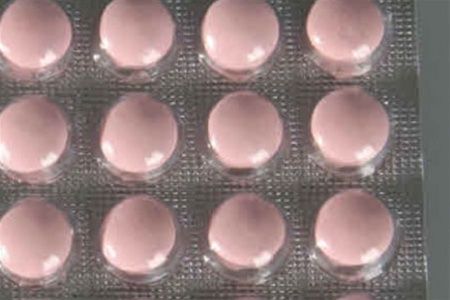Medical expert of the article
New publications
How do I control my insulin and glucose levels?
Last reviewed: 04.07.2025

All iLive content is medically reviewed or fact checked to ensure as much factual accuracy as possible.
We have strict sourcing guidelines and only link to reputable media sites, academic research institutions and, whenever possible, medically peer reviewed studies. Note that the numbers in parentheses ([1], [2], etc.) are clickable links to these studies.
If you feel that any of our content is inaccurate, out-of-date, or otherwise questionable, please select it and press Ctrl + Enter.

Elevated insulin and glucose levels in the blood can be the cause of excess weight and poor health. People often attribute this to stress and depression, as well as poor nutrition. But it's much more complicated: in order not to gain excess weight, you just need to control the level of glucose and insulin in the blood. How to do this?
The "invisible insulin" method
If you exercise and simultaneously monitor your hormone levels with hormone tests, this will facilitate the transport of glucose into muscle tissue, and its level in the blood will decrease significantly, which means you will avoid excess fat deposits due to glucose.
Sports exercises together with a properly formed menu will also help to get rid of the development of insulin resistance, that is, the body's rejection of insulin.
During exercise, excess fat in the muscles is burned and energy is delivered to the muscle cells in exchange. This helps to activate the metabolism
What is hormonal balance?
This is the ratio of hormones that can be used to control the body's metabolic processes. If your doctor knows your hormonal balance, it helps him determine where in the body fat deposits accumulate more and where less.
When the body's levels of estradiol, as well as testosterone and thyroid hormone T3 (in its free form), are restored, this helps insulin resistance gradually disappear.
What does glucose intolerance mean and how to deal with it?
When there is too much glucose in the blood, it is difficult to control. And the body can develop glucose intolerance. As a result, a person also risks developing diabetes.
Doctors may initially diagnose hypoglycemia, which is a low blood glucose level. Below normal means less than 50 mg/dl. Although there are situations when a person's glucose level is normal, but there are jumps - from high to too low glucose levels, especially after eating.
Glucose feeds brain cells, giving it the energy it needs to function. If glucose is produced or supplied to the body in less than normal amounts, the brain immediately sends a command to the body about it.
Why can blood glucose levels be high? When insulin production increases, glucose levels drop sharply. But as soon as a person has eaten something sweet, especially sweet cakes (carbohydrates), then after 2-3 hours the blood glucose level can rise sharply. Such fluctuations can cause glucose intolerance in the body.
What to do?
It is necessary to urgently change the menu. Eliminate heavy carbohydrate food and flour products from it. An endocrinologist can help with this. He can also help cope with hunger attacks that occur with a sharp decrease in blood glucose levels.
Keep in mind that this condition (increased appetite, accumulation of fat deposits, weight that you cannot control) is not only a sign of depression, as you may be told at the clinic. If you are treated with antidepressants for this condition, this can lead to even more harmful consequences.
These may be symptoms of hypoglycemia - low blood glucose levels - plus glucose and insulin intolerance. It is necessary to restore hormonal balance and establish a healthy menu.
How to detect insulin resistance?
To detect insulin resistance, it is important to first perform a test that shows the insulin response to glucose. During this test, the doctor will be able to determine the level of glucose in the blood and how it changes every 6 hours.
Every 6 hours, the insulin level is determined. This data can be used to understand how the amount of glucose in the blood changes. Are there any big jumps in its increase or decrease.
The insulin level must also be taken into account here. By how it changes, you can understand how insulin reacts to glucose.
If the insulin level is not taken into account, then this is a simplified analysis, the so-called glucose tolerance test. It helps to determine only how the body perceives the level of glucose in the blood and whether it can regulate it.
But whether the body perceives insulin can only be determined through a more detailed analysis.
If there is too much glucose

In such a state of the body, disturbances in the functioning of the brain may occur. It is especially harmful for the brain when the glucose level either rises or falls sharply. Then a woman may experience the following symptoms:
- Anxiety
- Drowsiness
- Headache
- Resistance to new information
- Difficulty concentrating
- Strong thirst
- Frequent trips to the toilet
- Constipation
- Pain in the intestines, stomach
Blood glucose levels above 200 units are a symptom of hyperglycemia. This condition is the initial stage of diabetes.
Too low glucose level
It may be low all the time or drop sharply after eating. Then doctors observe the following symptoms in a woman.
- During physical exercise - strong and rapid heartbeat
- A sudden, unexplained anxiety, worry, even panic
- Muscle pain
- Dizziness (sometimes to the point of nausea)
- Abdominal pain (in the stomach area)
- Shortness of breath and rapid breathing
- The mouth and nose may become numb.
- The fingers on both hands may also go numb.
- Inattention and inability to remember, memory lapses
- Mood swings
- Tearfulness, breakdowns
Besides these symptoms, how else can you tell if you have low or high glucose and insulin levels?
How to determine if there is something wrong with glucose?
You need to measure its amount during the period when you haven't had breakfast in the morning. At least 12 hours should pass after your last meal. If the glucose level is from 65 to 100 units, this is a normal indicator.
Some doctors claim that an increase of another 15 units – to a level of 115 units – is an acceptable norm.
As for the latest research, scientists claim that an increase in glucose levels above 100 mg/dl is already an alarming symptom.
This means that the body may develop the initial stage of diabetes. Doctors call this condition glucose intolerance.
What are the risks for a woman with high glucose levels?
Know that this is serious: According to medical research, even a small increase in blood glucose levels is a risk factor for developing diabetes.
If fasting glucose increases by more than 126 units and the constant glucose level reaches 200 units or more, it can lead to death.
A glucose level of more than 200 mg/dL 2 hours after eating may indicate the development of diabetes.
How to determine the level of insulin in the body?
This is much more difficult than determining glucose levels because insulin levels can vary. We will introduce you to the average insulin level.
An insulin level test performed on an empty stomach is 6-25 units. The insulin level 2 hours after eating normally reaches 6-35 units.
How can you tell if a person is developing diabetes?
It is necessary to measure the level of glucose and insulin 2 hours after eating - this is the optimal way to determine the body's tendency to develop diabetes.
If the glucose level in the body is from 140 to 200 units (an hour after eating) - the risk of developing diabetes is very high. Its initial stage is possible.
If the glucose level after eating is from 140 to 200 units (but not more), this is already diabetes.
You need to see an endocrinologist for an examination.
Keep in mind that different labs may have different glucose and insulin levels, so ask your doctor at what level you should start worrying and starting treatment.
At-risk groups
If a woman has high fasting insulin levels, it may mean she has polycystic ovary syndrome.
This condition can occur in women before menopause and may be accompanied by rapid weight gain, especially around the abdomen and waist.
It is necessary to know the normal insulin level and control it in order to avoid excessive weight gain and maintain weight control.
Another way to control glucose levels
Take a hormone test to determine your glucose levels using other hormone ratios. In particular, your hemoglobin A1C levels. This hemoglobin supplies oxygen to your red blood cells.
Be aware that if your body is no longer able to control your blood glucose levels, your hemoglobin levels will respond by increasing.
Testing for this hormone can help you accurately determine whether your body can still regulate glucose levels or has lost this ability.
The test is so accurate that it can tell you exactly what your glucose levels have been over the past 90 days.
If diabetes has already developed, the level of hemoglobin in the body will show whether you need to change your diet. This hormone can be used to determine whether your diet contributed to the development of glucose intolerance syndrome in the body.


 [
[